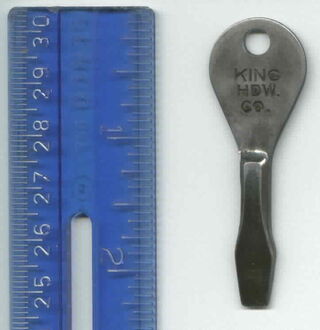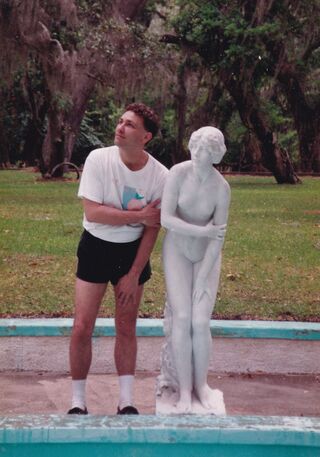Creativity
Everything Has a Story
Here are 5 random stories about things I can see from my desk.
Posted July 13, 2020
Look around you, there are objects everywhere and each one of them has a story. Are they interesting stories? Well, that depends on how you tell it.
1. There’s a bluebird house outside my office window. It’s one of nine that I’ve hung on trees around my yard. My mother loved bluebirds and wanted to see them around her home. So, I did some research and learned that if you put up bluebird houses, you will attract them. I went to the library and looked up the specs on how to build one, then built and hung three of them in her front yard. Mother passed away 29 years ago, and I spread her ashes near the bird feeder in front of her house. I now own and live in that house, and I see bluebirds all the time. They remind me of Mother.

2. My key ring sits on my desk until I’m ready to leave the house. On it is a tiny flathead screwdriver manufactured by Proto and engraved with: KING HWD CO for King Hardware Company. It belonged to my father, who acquired it as a gift from King when he worked as a purchasing agent for a construction company. He carried it on his key ring for as long as I knew him, and I placed it on mine the day he died (more than 40 years ago).
One day, on my way home from giving a speech, a TSA officer tried to take it away from me in the Charleston, West Virginia, airport (back in the early days after 9-11 when they would do random bag checks at the gate). I tried explaining to her that it was a very valuable keepsake to me, but like Barney Fife, she was a strict order-follower, "It is a screwdriver, and screwdrivers are not allowed on the plane." I asked her if she seriously thought I could hijack a plane with it, but she kept insisting: "It's a screwdriver, screwdrivers are on the list, and I have to confiscate it." I asked her if I could just put it in my carry-on and check my bag. She replied, “It’s too late for that.”

I told her that I was not giving up my father's screwdriver, that I would miss the flight before I would do that. I asked for her supervisor, who was just as strict. I asked him if I could give it to one of the flight attendants to hold during the flight and return it to me when we landed in Atlanta. He said, "No, it would be an unsecured screwdriver loose at your final destination, and you could pass it to another person wanting to hijack a plane." I said, "Seriously?" I finally resolved the situation by phoning my client and asking her if she would come to the airport and pick it up from the lost and found. She agreed. I then took the screwdriver off of my keyring for the first time since my father died, put it in an envelope I had in my briefcase, sealed it, wrote my client's name on the outside, then handed it to the TSA supervisor who promised to put it in the lost and found office. Reluctantly, I boarded my plane. Two days later, I received the key back by Federal Express. Lesson learned: I no longer carry that key ring when I fly.

3. In my bookcase is a first edition copy of Ayn Rand’s first book, We the Living. I bought it in a used book store in Sarasota, Florida, 31 years ago, for $16. I was thrilled to have found a copy and for such a low price. I knew that it was one of only 3,000 printed and that it went out of print until her second novel, The Fountainhead, became a best-seller. However, before it went back into print, she rewrote it — making the first edition even more limited. When I first bought it, it was worth around $2,000 because you could only find a copy through a book dealer and that was the price I saw advertised in a magazine for book collectors. Nowadays, with the internet making things more readily available (with several places online where old books are sold), the value of it has dropped to under $1,000. A few years ago, I found a company on the internet that makes facsimile dust jackets for out of print books, and I was able to get one for it. The bright red cover really pops on my bookshelf, and I notice it more often than I used to.

4. Hanging on the wall across from my desk is a small print of the painting September Morn by Paul Chabas, which depicts a naked woman standing ankle-deep in a lake. It was a controversial painting in 1912. Beneath it, on a table, is a framed photograph of me standing next to, and mimicking a sculpture. The sculpture is of a naked woman, and it is standing next to the pool at the Reynolds Mansion on Sapelo Island, Georgia. That print and the photo have been in the same place for more than two decades. Recently, an artist friend was visiting, and looking at those two items commented, “Wow, this is cool; you posing with a sculpture of the woman from September Morn.” I said, “Huh! What?” As many times as I had looked at that photo and print, I never made that connection.
5. Also on my desk is a cell phone. It’s much nicer than any phone I would’ve purchased myself. It’s a gift from a girlfriend. She wanted me to help her remotely monitor her home burglar alarm system, but the phone I had was not powerful enough to operate the app, so she bought it for me. We’re no longer together. I still have the phone, but not her... hmm, kinda reminds me of a Patsy Cline song.
What stories can you tell about the objects around you? How interesting can you make those stories?
Robert Evans Wilson is an innovation/change speaker, author, and consultant.


